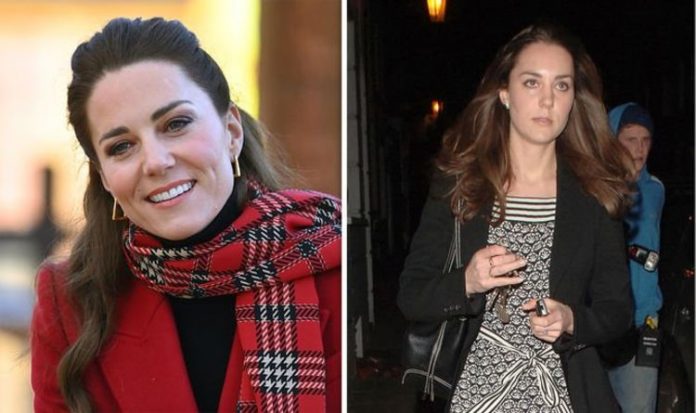The Duchess of Cambridge turns 39 this week and will spend her birthday in a national lockdown with her family. It is expected that she will release a photograph or two to mark the occasion, something she did for all three of her children on their lockdown birthdays last year. The Cambridges have found that releasing official photographs disincentivises paparazzi bothering them on big days.
This is because newspapers would rather use official photographs over bad quality, grainy ones where the subject is clearly not happy about it, and also avoids any legal trouble or complaint to the press watchdog IPSO.
One particularly bad year for paparazzi harassment was Kate’s 25th birthday, when she ran a gauntlet of more than 20 press photographers and five television crews as she emerged from her London flat.
Some even chased her down the street, while others attempted to take pictures through the windows of her car as it sped away.
At the time, there was much speculation that Prince William was going to propose to his girlfriend of four years and a growing posse of photographers were tracking her every move.
READ MORE: Kate Middleton humiliation after Willam’s partying ended relationship
However, executives at News International, which owns , The News of the World, The Times, day Times and the now-closed London Paper freesheet warned their editors that they should no longer use paparazzi shots of Kate.
The ban extended to photos of her leaving nightclubs and going about her daily business, although the newspapers continued to use shots taken by the Press Association at public events, such as the races.
Meanwhile, Kate’s lawyers were threatening legal action to anyone who had published the birthday photographs.
News International chairman Les Hinton was also the chairman of the Press Complaints Commission (PCC) code of practice committee, the precursor to the Independent Press Standards Organisation (IPSO), an independent body that holds newspapers to account in terms of ethics.
“The press have formed this great scrum of photographers.
“People have the right to grow up and live their lives without constant media intrusion.”
Law firm Harbottle & Lewis, which acts on behalf of Prince Charles, had written to editors over a year before to appeal for Kate and her family to be left alone.
They said photographers were permanently stationed outside her house.
Six months later, they wrote to some tabloid newspapers and picture agencies again after Kate was pictured sitting at a bus stop.
There had been an industry-wide moratorium on paparazzi shots on royals before.
It was agreed that William and Harry would be left alone as long as they were in education.
After Princess Diana died, editors refused to publish paparazzi photos after long-lens photographers were blamed by some for hounding the Princess of Wales in Paris.
The parallels of the treatment that Kate was enduring and that which Diana endured was reported to have exacerbated William’s concerns.
A spokesman for the PCC said it had not received a formal complaint from Kate or Clarence House.
He said it often contacted editors and news broadcasters in situations where people felt they were being harassed, both from those in the public eye and private individuals.
These days, Kate and William have a very good relationship with the press, although they are very protective of their children.
They have negotiated a deal whereby their children are not photographed except at certain public events, and instead Kate takes pictures herself and releases them on special occasions like birthdays.
Both she and William are determined that Prince George, Princess Charlotte and Prince Louis will be protected from media intrusion.







